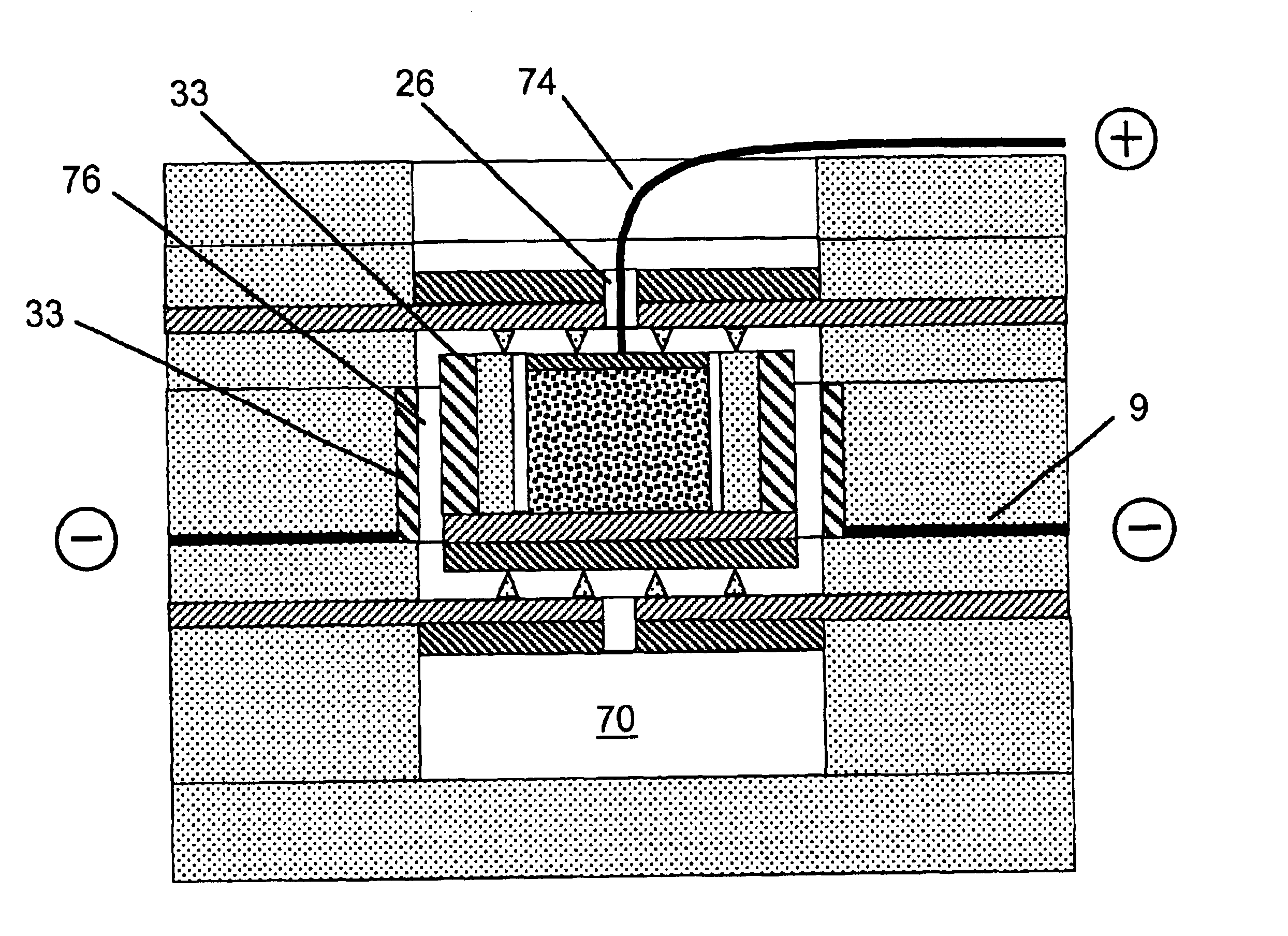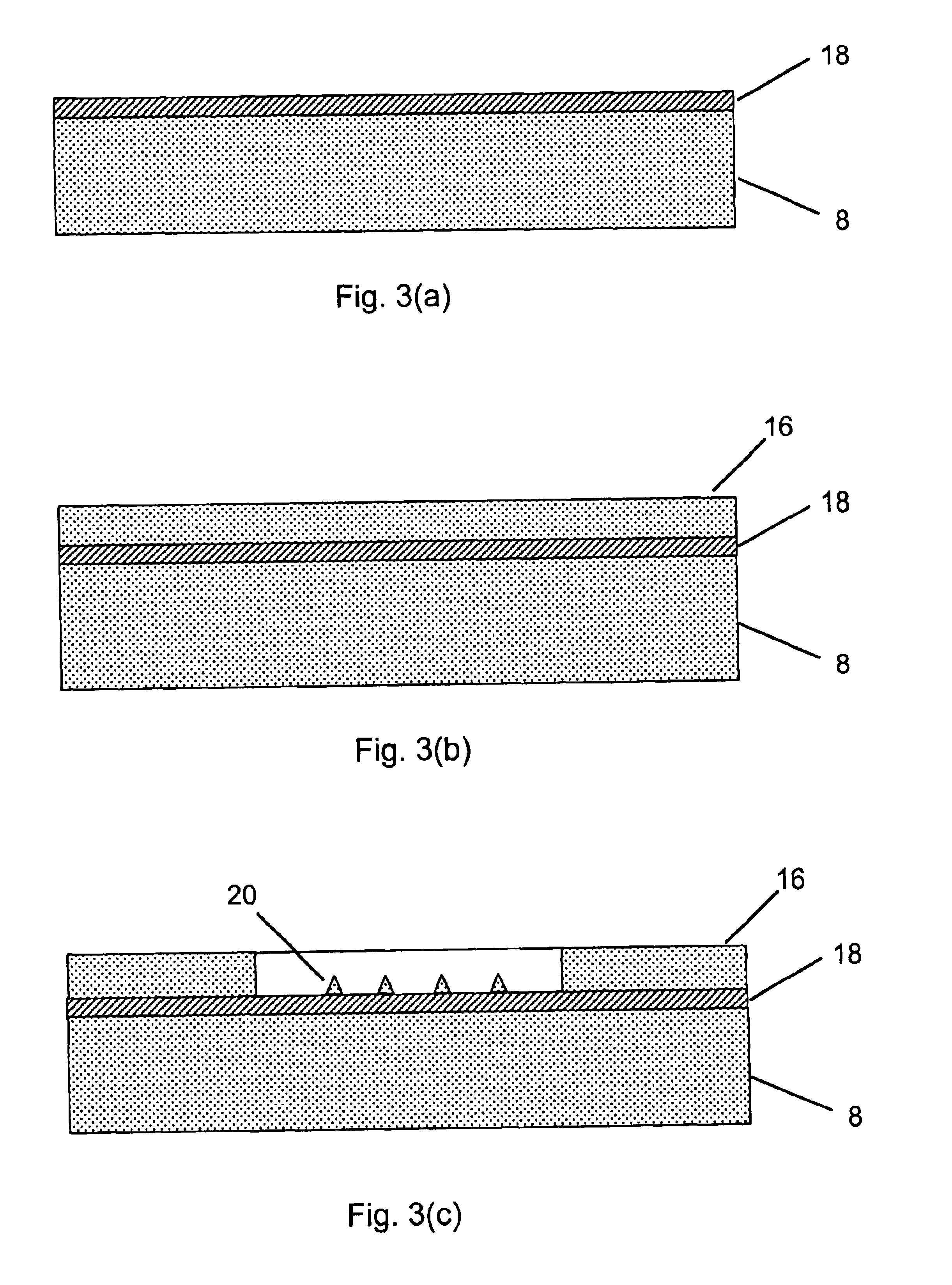Self-powered microthermionic converter
a converter and microthermionic technology, applied in the manufacture/treatment of thermoelectric devices, machines/engines, amplitude demodulation, etc., can solve the problems of unintended heat transfer, low voltage produced, and many theoretical problems that existed at the inception of the idea, etc., to achieve long life, increase mobility, and small size
- Summary
- Abstract
- Description
- Claims
- Application Information
AI Technical Summary
Benefits of technology
Problems solved by technology
Method used
Image
Examples
Embodiment Construction
Microthermionic converters of the present invention are manufactured using semiconductor integrated circuit (IC) fabrication methods and bulk or surface micromachine manufacturing techniques. All elements of the diode (emitter electrode, collector electrode) are made using standard chemical vapor deposition techniques and etch techniques known by those skilled in the art in the semiconductor industry. Chemical vapor or physical deposition allows for accurate, reproducible crystalline growth of extremely thin layers of metals or oxides (for electrode formation).
The microthermionic converter is fabricated with an interelectrode gap space of preferably less than 10.mu.m, more preferably between approximately 1 .mu.m and 10 .mu.m, and most preferably between approximately 1 .mu.m and 3 .mu.m, by utilizing microengineering techniques, thereby allowing the converter to be operated without significant performance penalty due to space-charge effects; in the absence of typically utilized hig...
PUM
 Login to View More
Login to View More Abstract
Description
Claims
Application Information
 Login to View More
Login to View More - R&D
- Intellectual Property
- Life Sciences
- Materials
- Tech Scout
- Unparalleled Data Quality
- Higher Quality Content
- 60% Fewer Hallucinations
Browse by: Latest US Patents, China's latest patents, Technical Efficacy Thesaurus, Application Domain, Technology Topic, Popular Technical Reports.
© 2025 PatSnap. All rights reserved.Legal|Privacy policy|Modern Slavery Act Transparency Statement|Sitemap|About US| Contact US: help@patsnap.com



